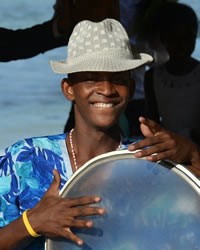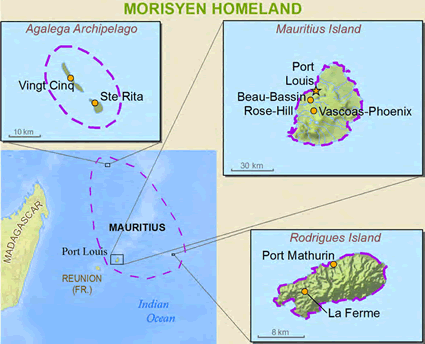Mauritius Island, a land area of about 15-by-20 miles long and wide, lies 560 miles east of Madagascar, off east Africa. The island is home for a mixed group including indentured workers, Chinese traders, European settlers and those who descended from slaves. The language they speak is called Morisyan or Mauritian Creole. This includes the inhabitants of Agalega and of Rodriques as well as those in the main island.
Just an interesting note—the dodo, a flightless bird and a national symbol, comes from Mauritius. It was unfortunately hunted into extinction in the 17th century.
Many men in the region earn their living fishing in the surrounding coral reefs. Some men have a reputation for excellent masonry projects, while others work in textile factories, raise sugar cane, or serve in the tourism industry. Per capita it has one of Africa's highest incomes.
Afro-Creole heritage enriches the Mauritian culture with many types of unique folklore, music, and dance traditions. One of those musical forms, sega, originates from the rapid rhythms of slave songs.
The Afro-Creole descendants tend to be monolingual in the Morisyen language; Euro-Creoles often speak English and French as well. Mauritius Island currently enjoys social and political stability, but religious inequality could easily become volatile depending on changing government policies.
Approximately 32 percent of the general population is Christian. Another 66 percent follow Hinduism or Islam.
Mauritian Christians need revival fire in their churches.
Pray for revival in Mauritian churches that will bless Hindus, Muslims, and Buddhists in this country.
Pray for the Lord to bless thousands with a desire for spiritual truth that will change their lives forever.
Pray for peace and stability in Mauritius.
Scripture Prayers for the Mauritian in Mauritius.
Anonymous.
| Profile Source: Joshua Project |














